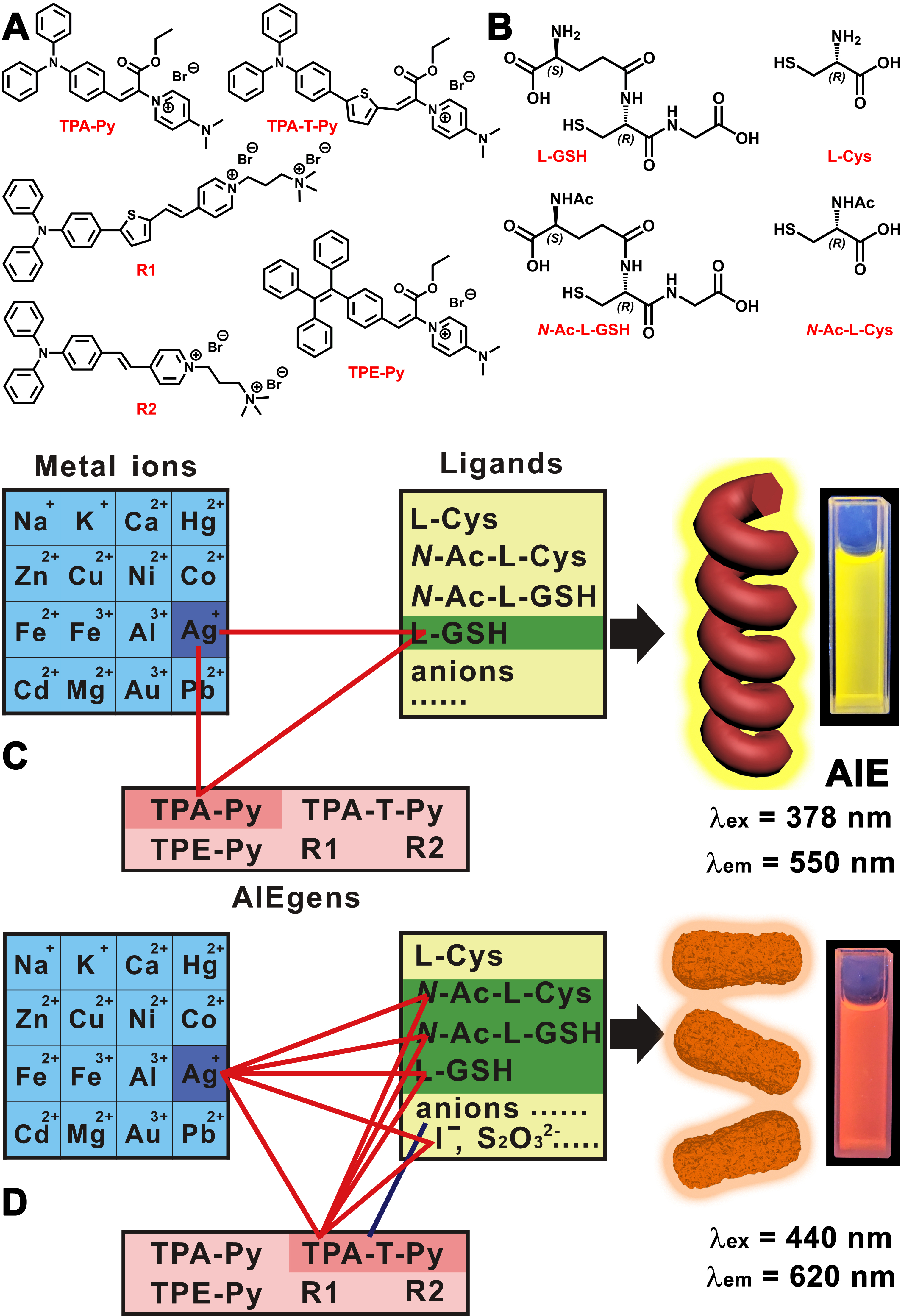Unique three-component co-assembly
Time:2023-04-26 21:13 Author:Xiaohuan Huang
Xiaohuan Huang, Junrong Li, Hong Tang, Miao Guo, Xue Wang, Xiaorong Wang, Xu Wang, Mingliang Tang, Fusheng Zhang, Yahui Zhang, Xiaopei Li, and Guangyan Qing*
Aggregate 2022, e272.
Nature has selected, produced, and evolved numerous molecular architectural motifs over billions of years for particular bio-functions. During this process, molecular self-assembly plays a critically important role. Inspired by these delicate assemblies,scientists devote themselves to developing various sophisticated complexes assembled by diverse and numerous structural motifs. By far, most of the examples focus on single-molecule self-assembly or co-assembly between two molecules,seldom works report the co-assembly among three building blocks due to the substantially increased complexity and decreased controllability. Here we report a novel three-component co-assembly among L-glutathione (L-GSH), AgNO3, and an aggregation-induced emission luminogen (AIEgen), namely triphenylamine–pyridinium (abbreviated to TPA-Py). TPA-Py, L-GSH, and Ag+ co-assemble into numerous long and ordered nanowires with left-handed helices, which show remarkable AIE properties that can be observed by naked eyes. This effect is only detected in this system, the replacement of TPA-Py with other AIEgens, L-GSH with other cysteine derivatives or anions, Ag+ with other metal ions, could not lead to the unique AIE effect, which endows this system with high specificity and controllability. This work provides new insight into the design of biomolecule recognition systems and discloses that ternary co-assembly could become a facile route to build sophisticated nanobiomaterials.
